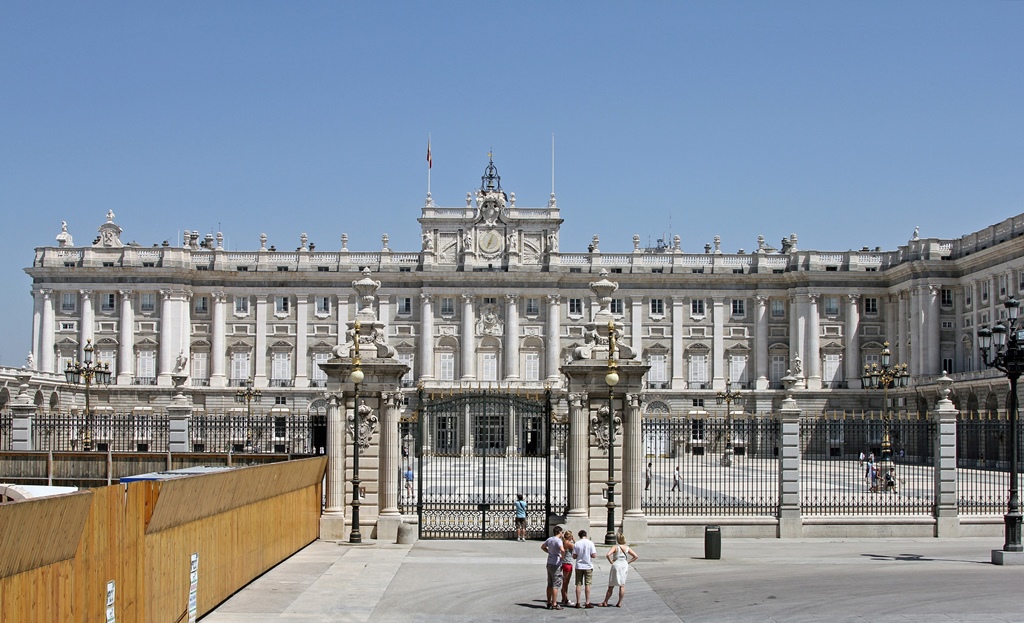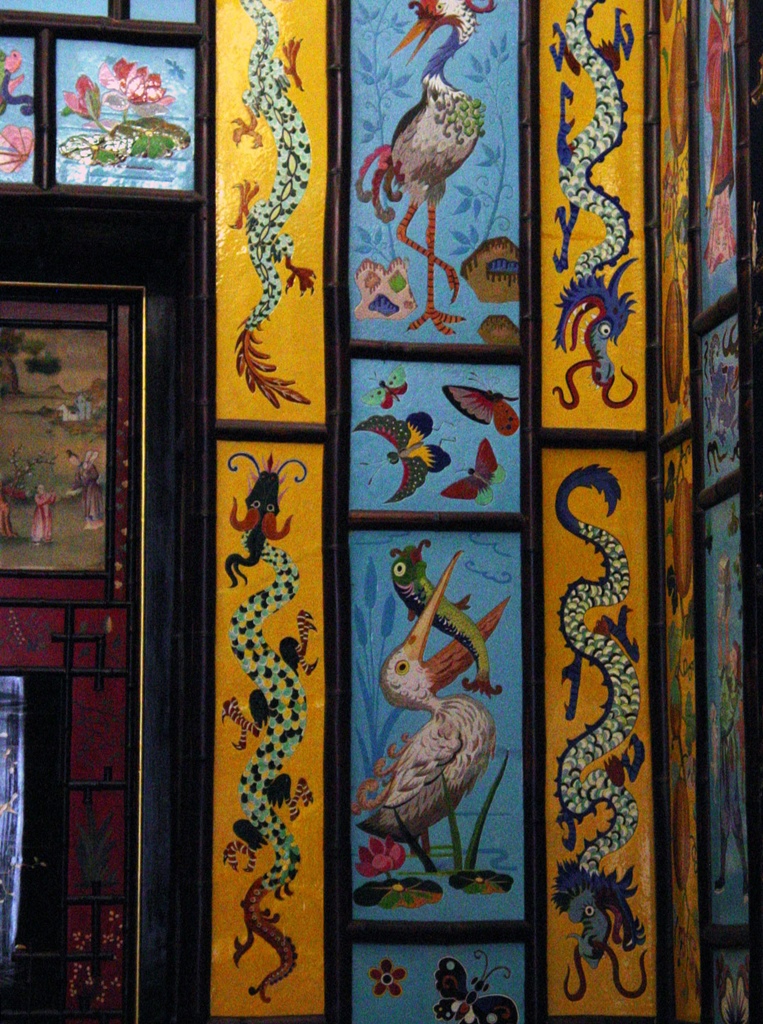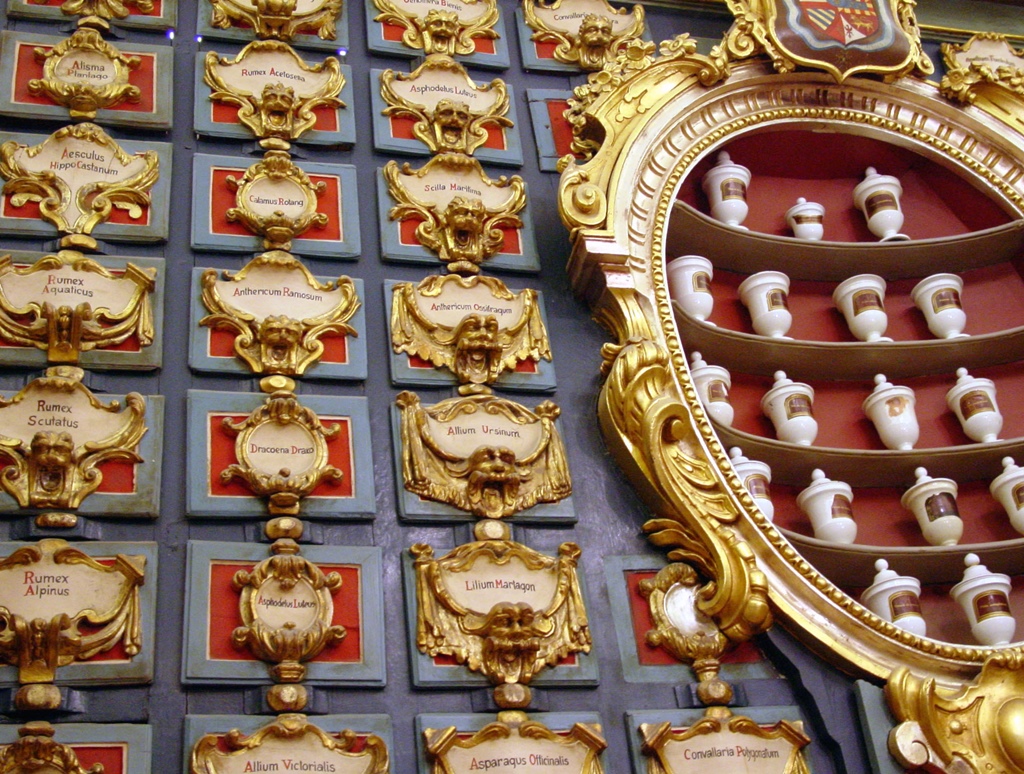Palacio Real
While the Parque del Retiro is located on the eastern edge of central Madrid, the
Palacio Real,
or Royal Palace, is located on the western edge. It's officially the residence of
the royal family in Madrid, and is used occasionally for state functions (leaving
tourists out of luck on such days), but the royal family has the good sense to not
actually live there. It's way too big (1.45 million square feet), and the constant
stream of gawking tourists would have to be irritating to the most patient of
monarchs.
The palace is built on the same spot as a Moorish fortress that was built in the 9th
Century, partly to defend the much more important city of Toledo from Christian
invaders. This worked until 1085, when the Christians were able to take over. The
fortress underwent a number of expansions and restorations over the ensuing
centuries under a variety of monarchs and architects, until it burned up on Christmas
Eve of 1734. The fire was tragic for a number of reasons, one of them being the loss
of a great deal of artwork. But many paintings, including the famous Las Meninas by Diego
Velázquez, were rescued by being thrown out of windows. The king at the time,
Philip V, immediately started a rebuilding project, and construction proceeded from
1738 to 1755. Philip directed that no wood be used in the construction, except for
the palace's doors and window frames, to prevent the occurrence of another disastrous
fire. Decorations and artwork were added to the palace over the years. Much of the
artwork found its way to the Prado, but a great deal remained as well.
Our visit to the palace began with an approach from the east, where we encountered
the Plaza de Oriente. This plaza features several statues, the most prominent
of which is an equestrian statue of Philip IV.

Statue of Philip IV

Plaza and Statues

Bob with Statues of Ordoño II and Alfonso III
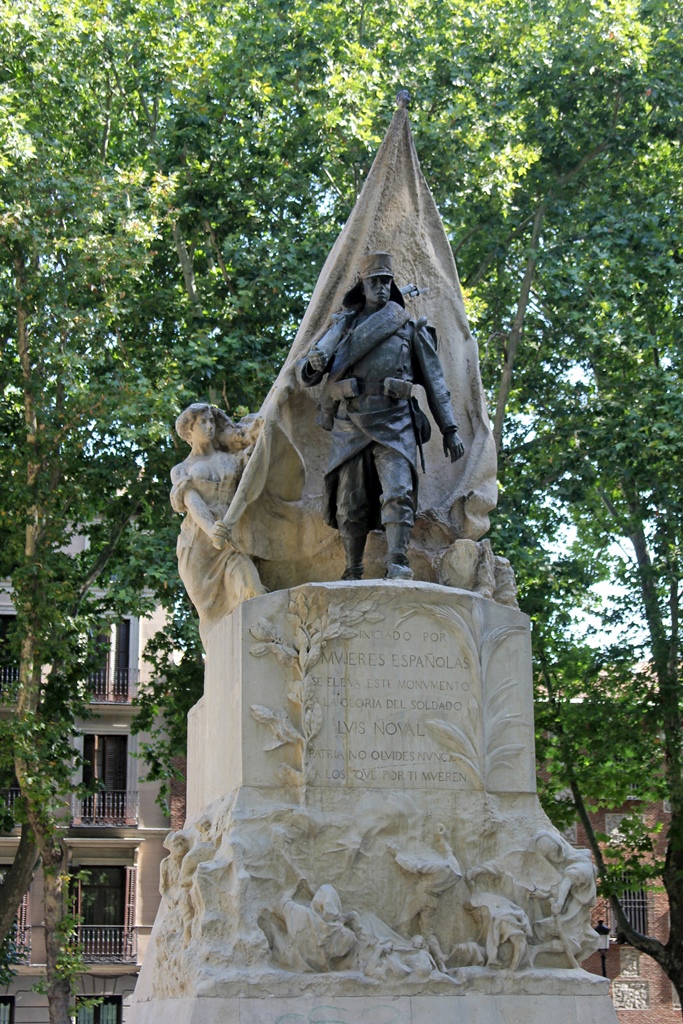
Monument to Corporal Luis Noval
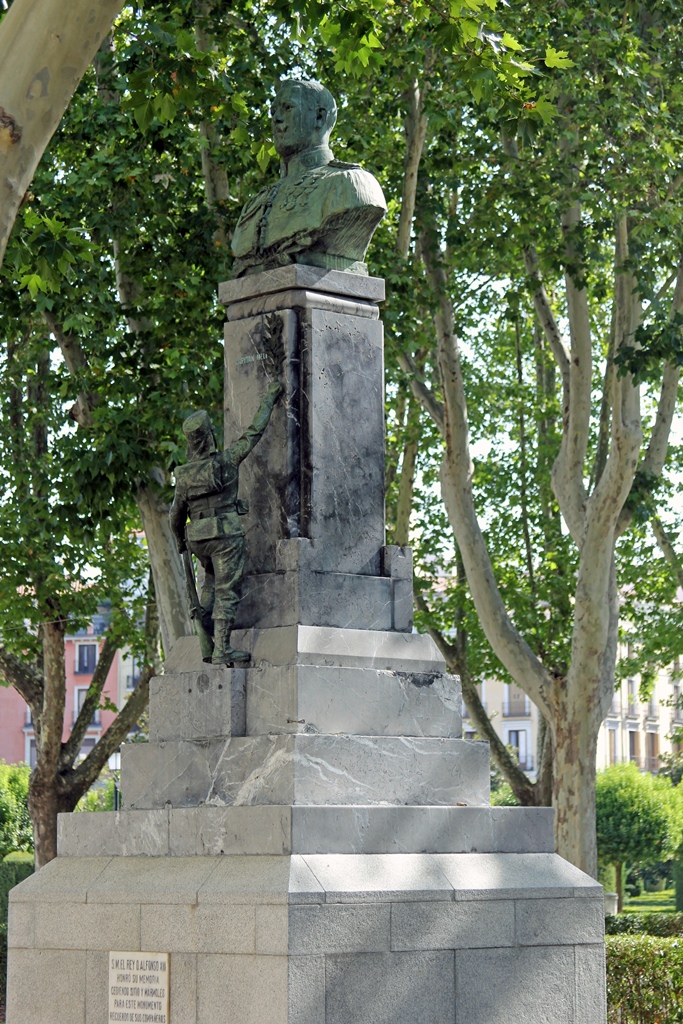
Monument to Alfonso XIII
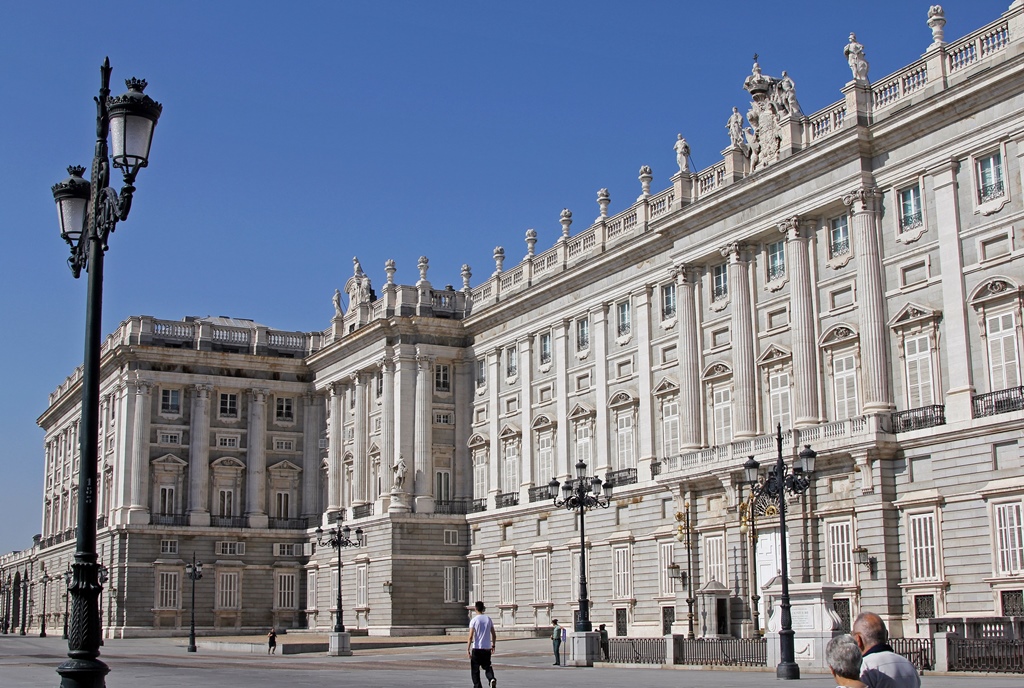
Eastern Façade of Palace
Entry to the palace is accomplished through its southeast corner, where admission
is paid and visitors are directed toward the main entrance to the palace, by way
of an immense, paved courtyard.
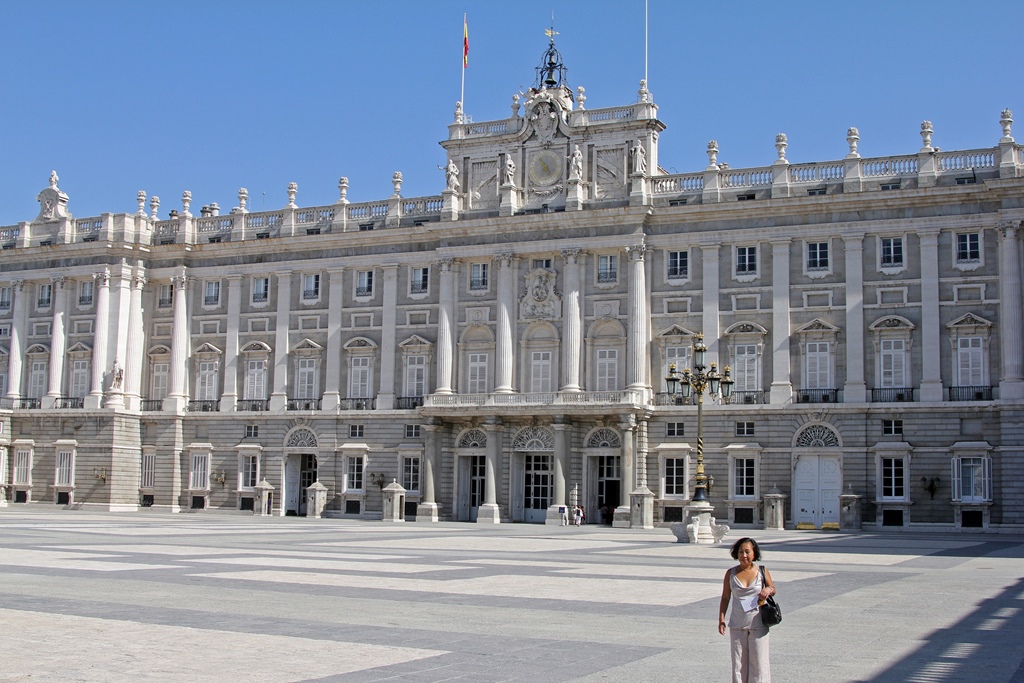
Nella and Southern Façade of Palace

Clock, Southern Façade
Lamppost in Courtyard
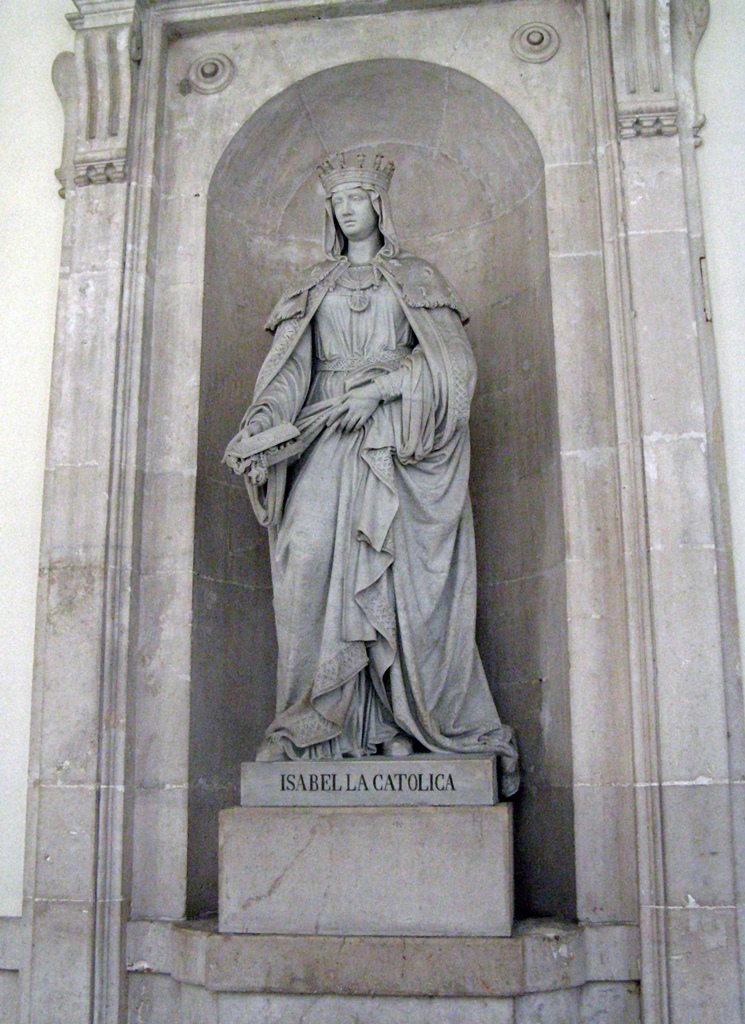
Queen Isabella
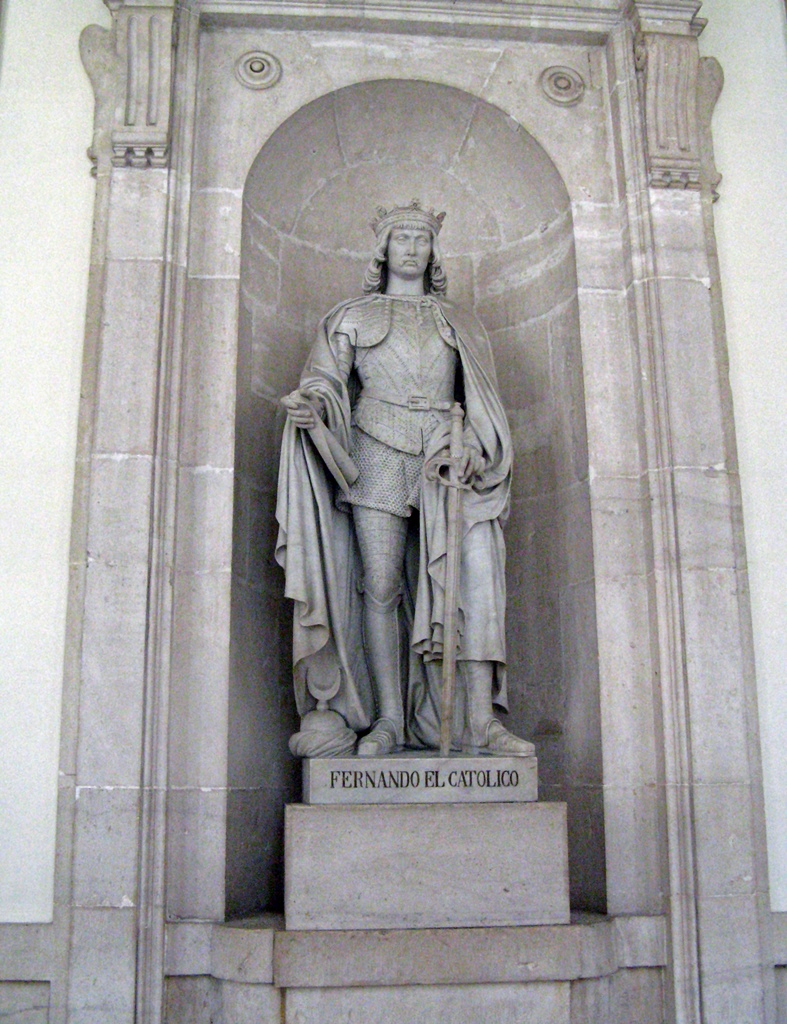
King Ferdinand
We entered the palace and were told to wait for the next English-language tour to
depart. This didn't take long, and we were also told that we couldn't take pictures
inside the palace. But fortunately for you, we'd taken the tour on the trip that
had also taken us to the Prado in 2005, and the photography rules for the palace
were also more relaxed then. So here are some pictures from 2005. They're pretty
much the same thing we saw in 2010.

Main Staircase
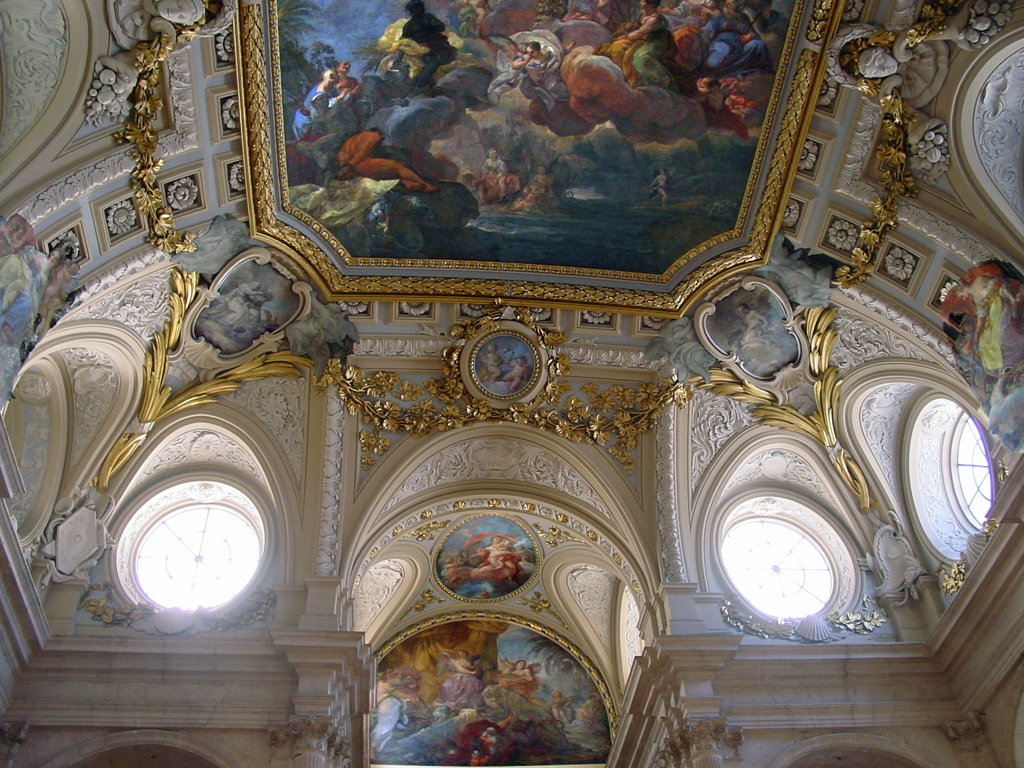
Above Main Staircase

Halberdier's Room - Venus/Vulcan/Aeneas
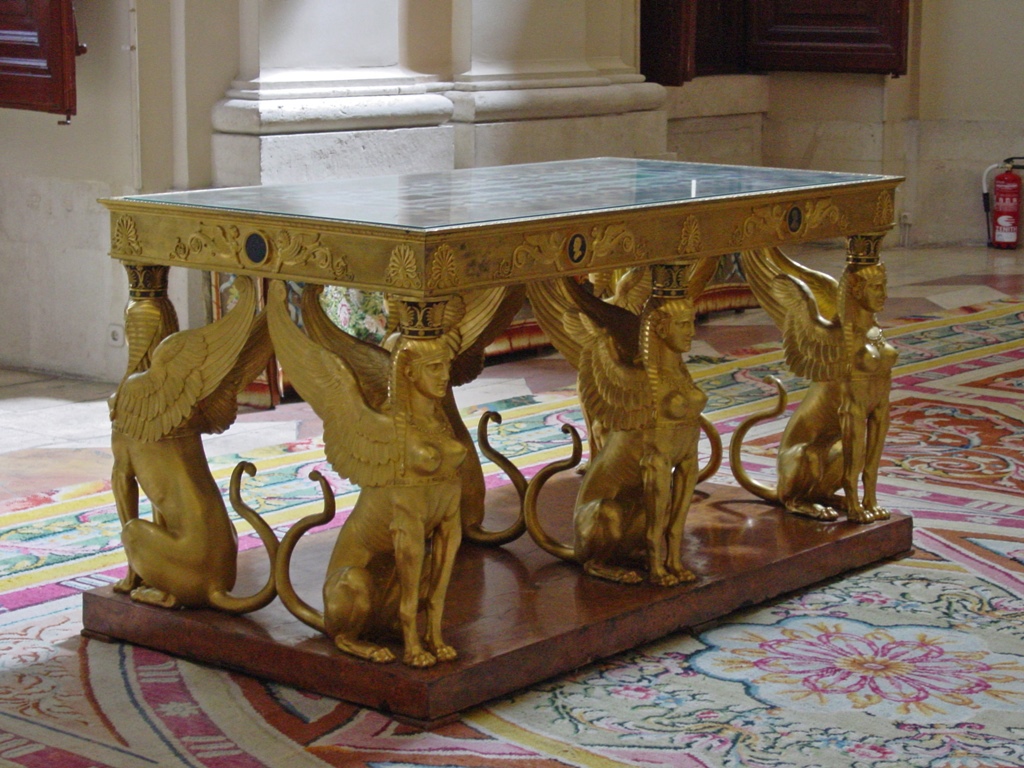
Table of the Sphinxes, Hall of Columns
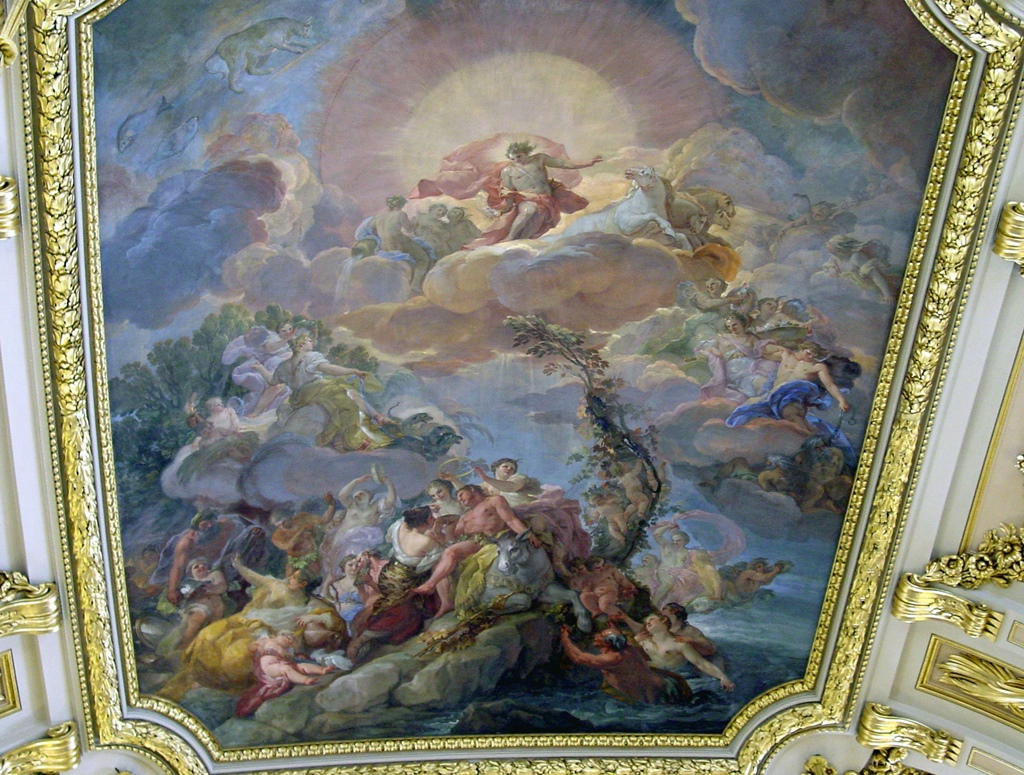
Hall of Columns - Apollo/Hours/Aurora/Zephyr
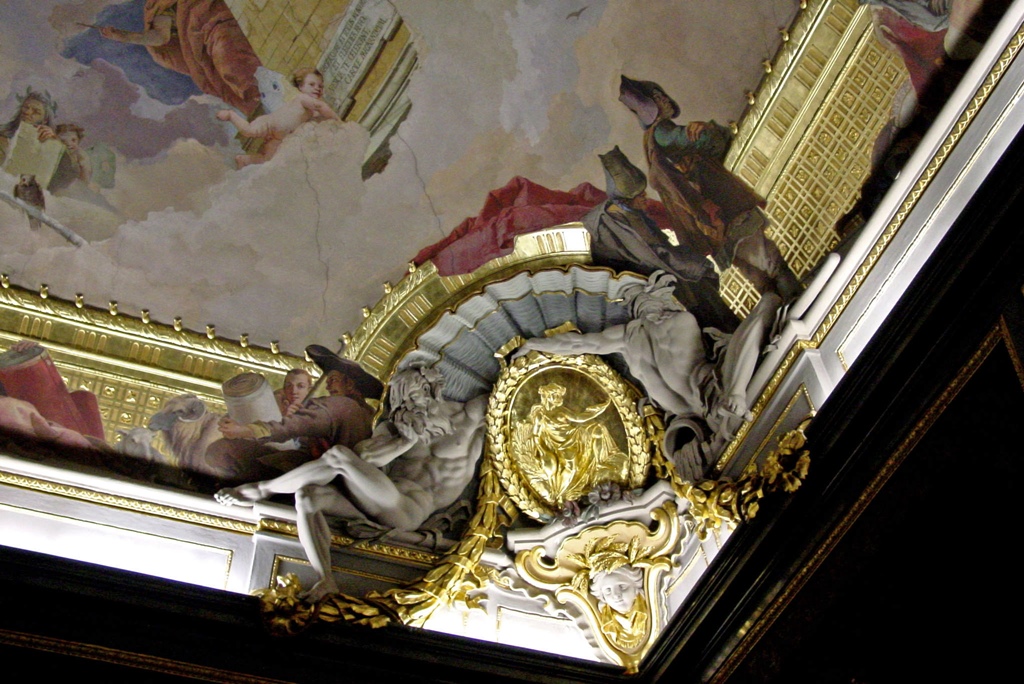
Corner of Ceiling, Throne Room
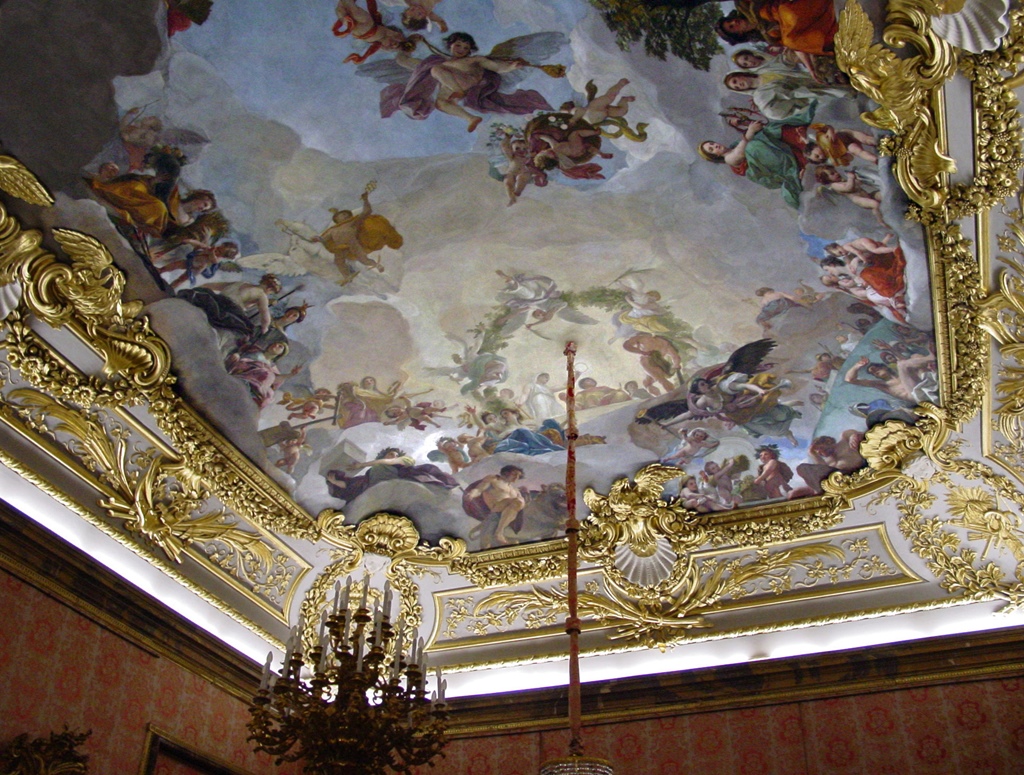
Anteroom of Carlos III - Apotheosis of Trajan

Ceiling Detail, Anteroom of Carlos III
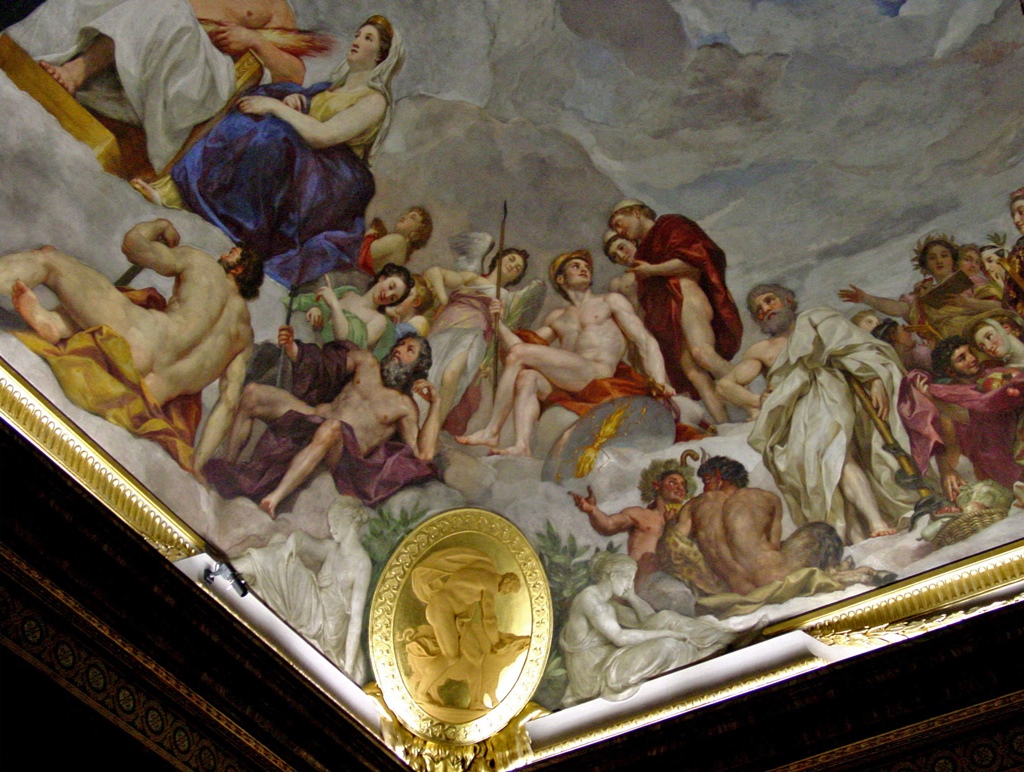
Anteroom of Carlos III - Apotheosis of Hercules
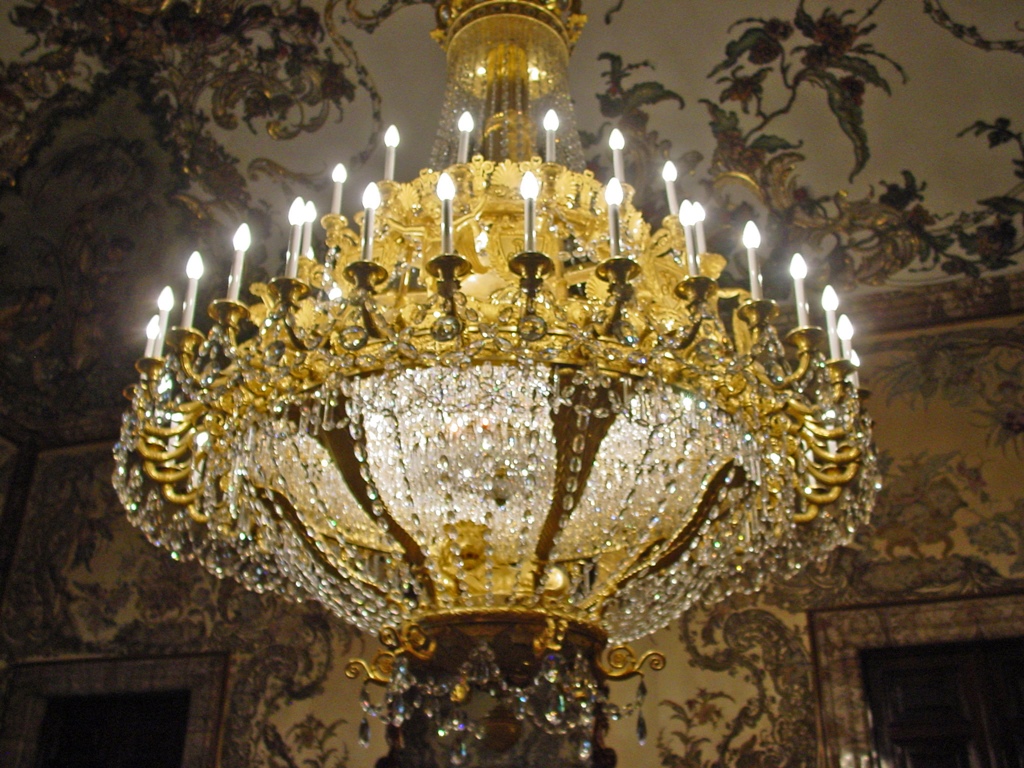
Chandelier, Royal Chamber of Carlos III
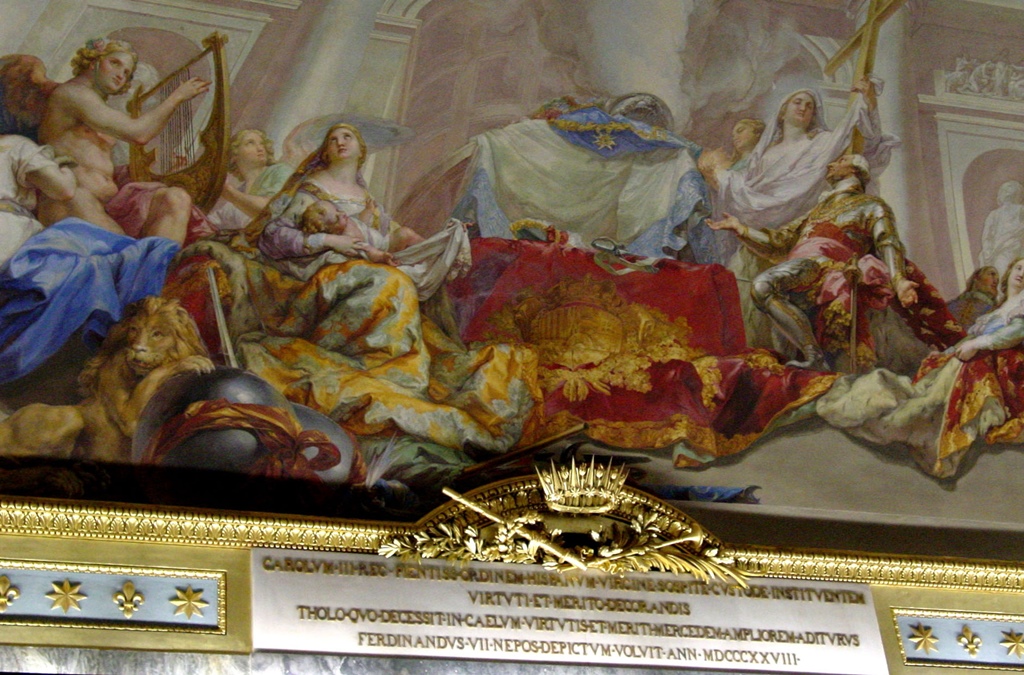
Ceiling and Inscription, Hall of Carlos III
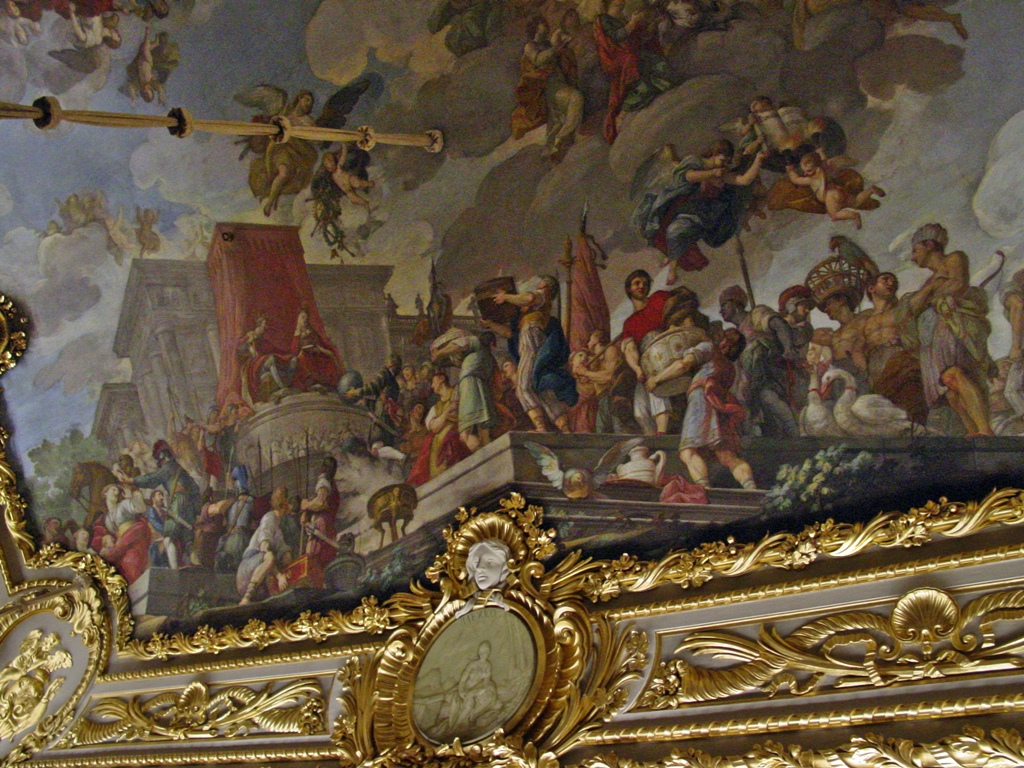
Ceiling and Mexico Medallion, Banqueting Hall
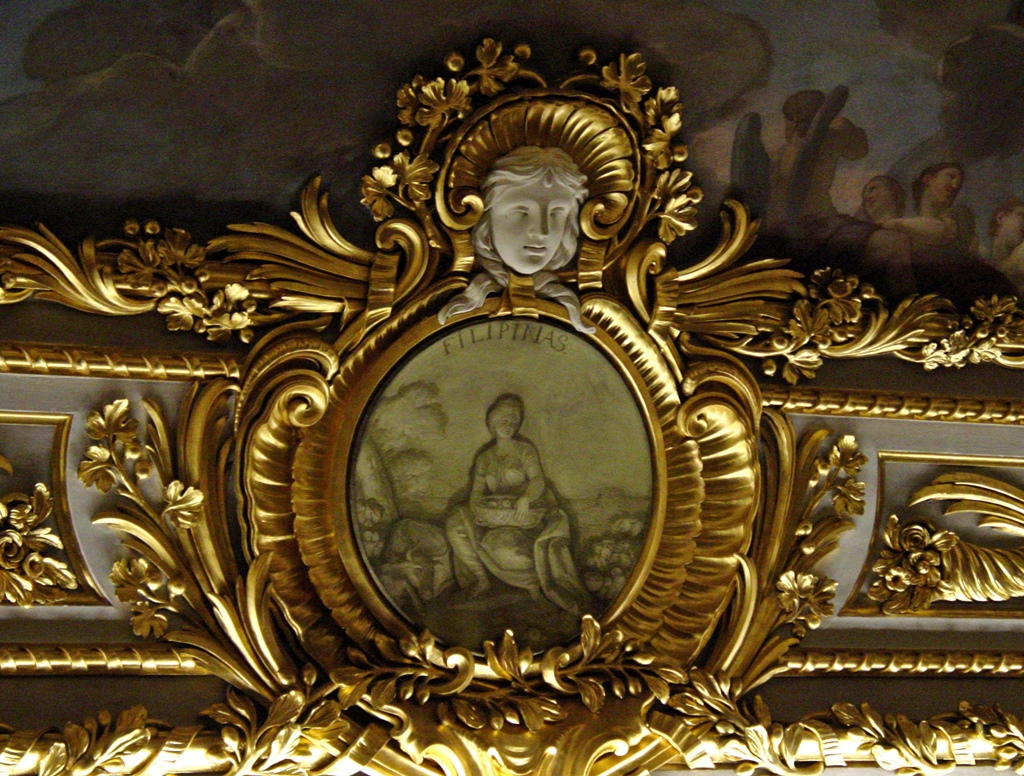
Philippines Medallion, Banqueting Hall

Stradivarius Viola (used by Palace Quartet)

Royal Chapel
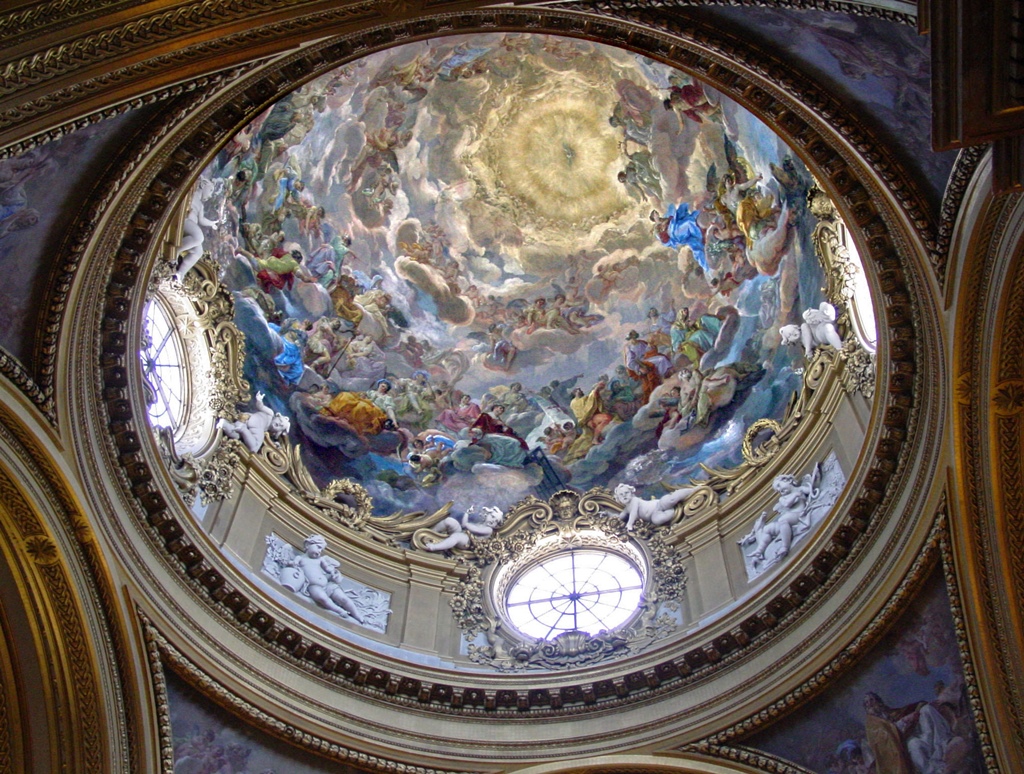
Dome, Royal Chapel
Smoking Room, or Japanese Room of Alfonso XII
After the conclusion of the tour, we found ourselves back in the gigantic courtyard
from which we'd entered the palace earlier. The admission price also included a
visit to the armory, located at the southwest corner of the courtyard. We passed
through and took a few pictures of the armor and weaponry on display, despite the
rules. A few of these are also from 2005:
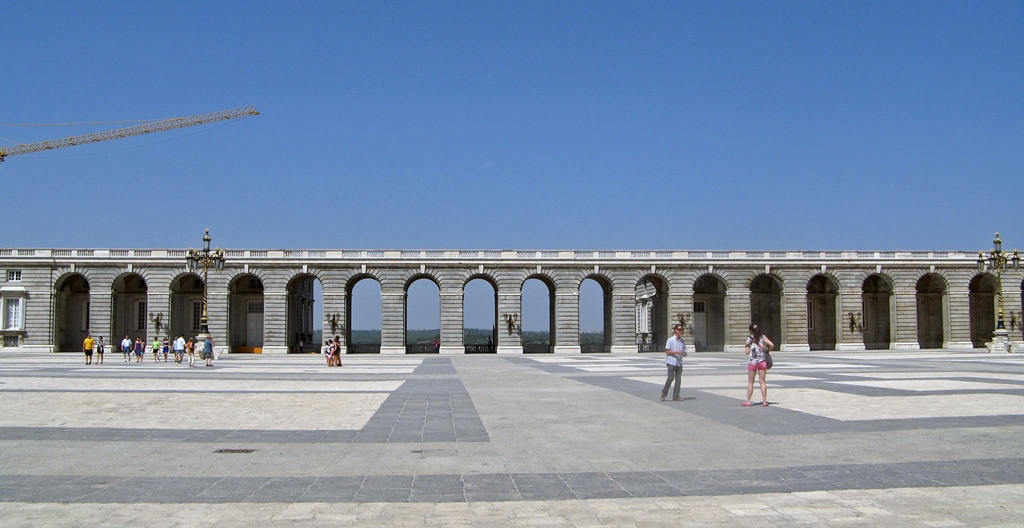
View Across the Courtyard
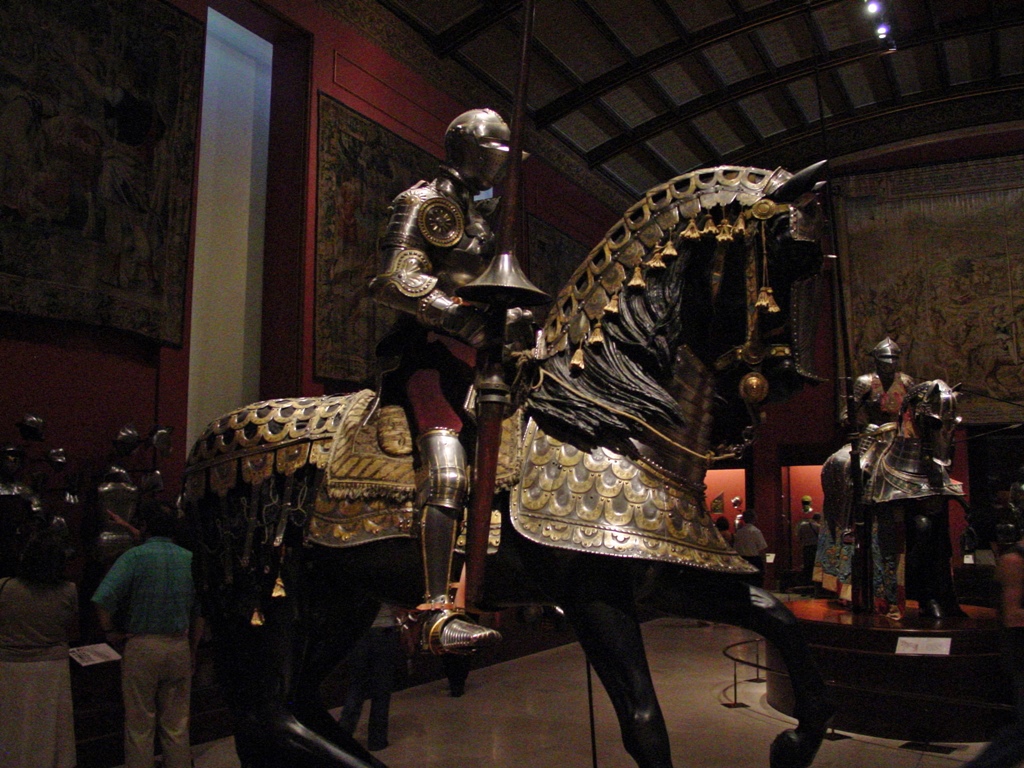
Human and Horse Armor
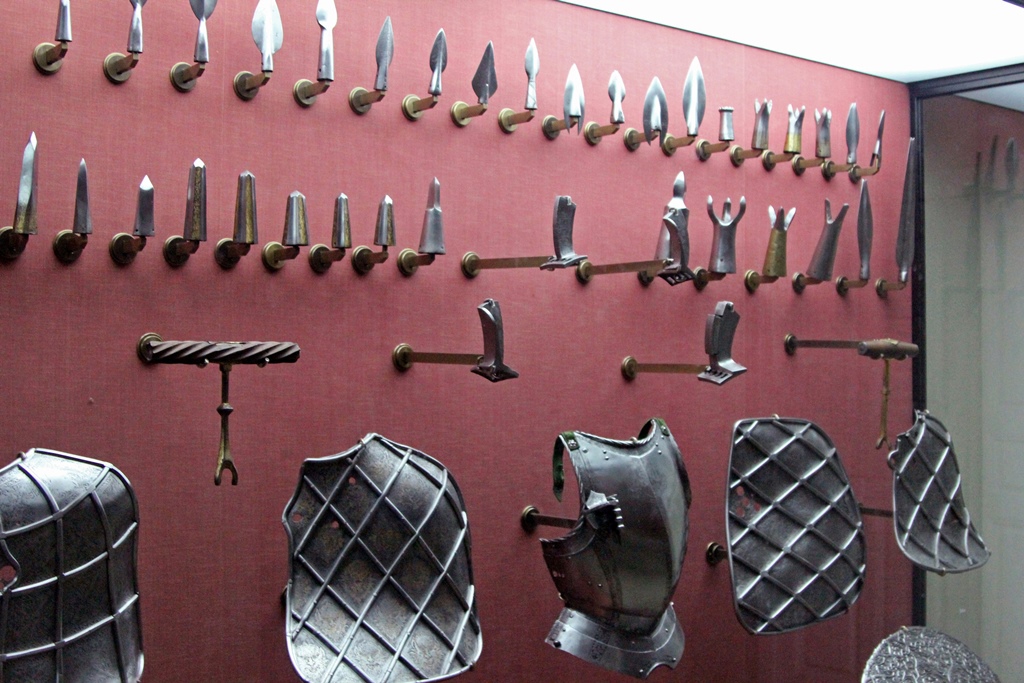
Spearheads and Breastplates
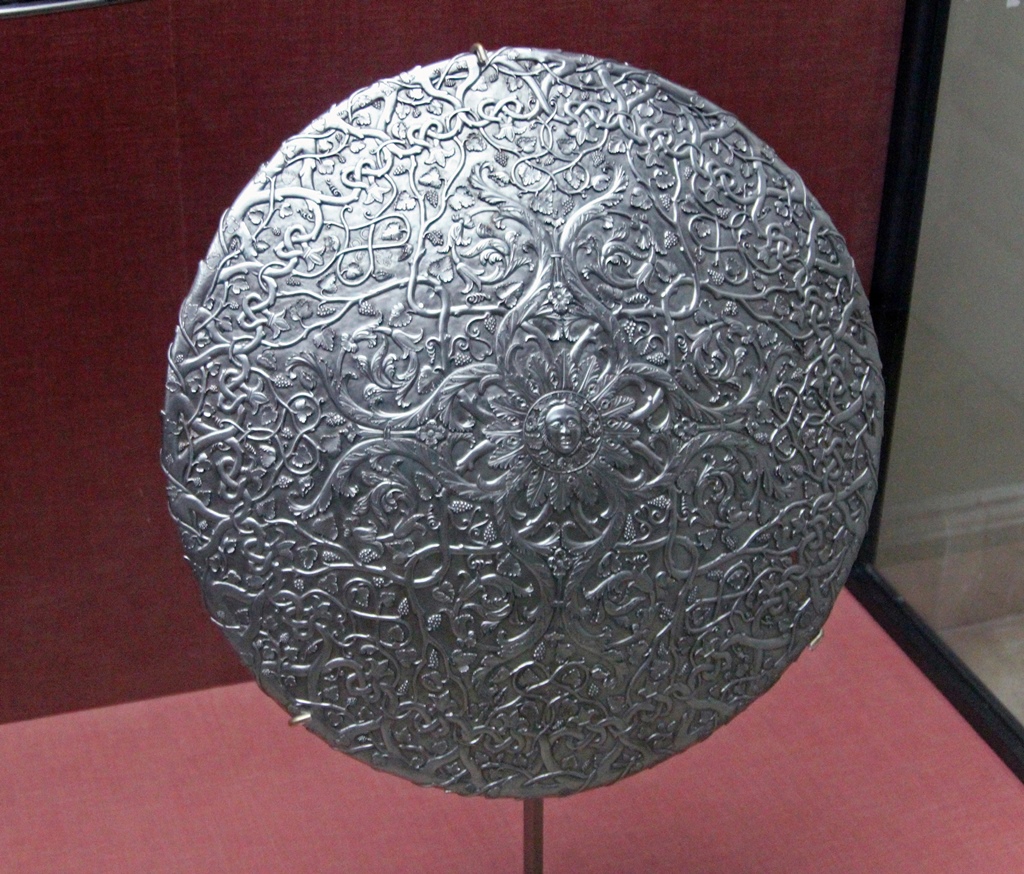
Shield
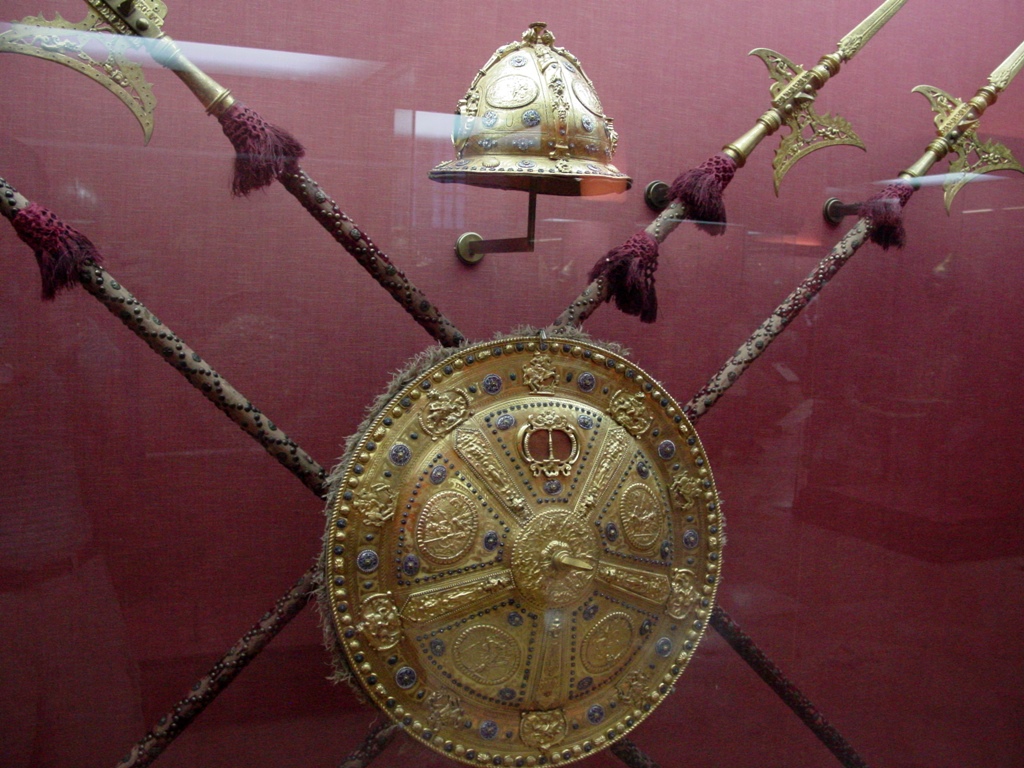
Shield, Helmet and Spears
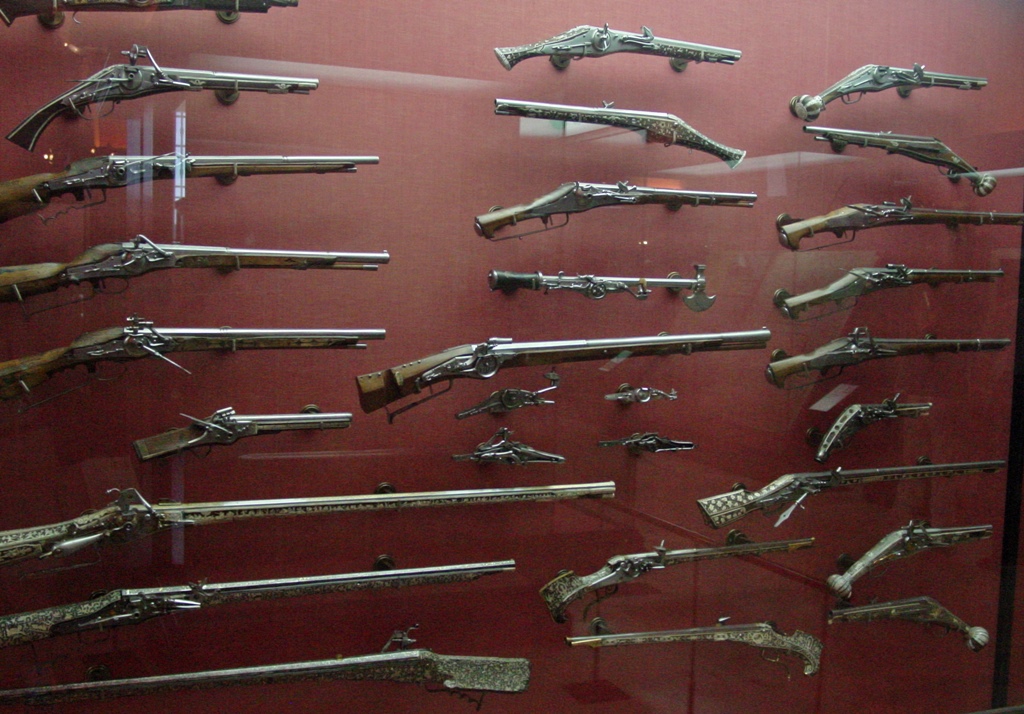
Guns
Near the exit from the armory was an overlook from which we had a nice view of a
large park, the Campo del Moro. This park is named for the Moors who camped in the
location during an unsuccessful attempt to retake the fortress early in the 12th
Century.

View Over Campo del Moro
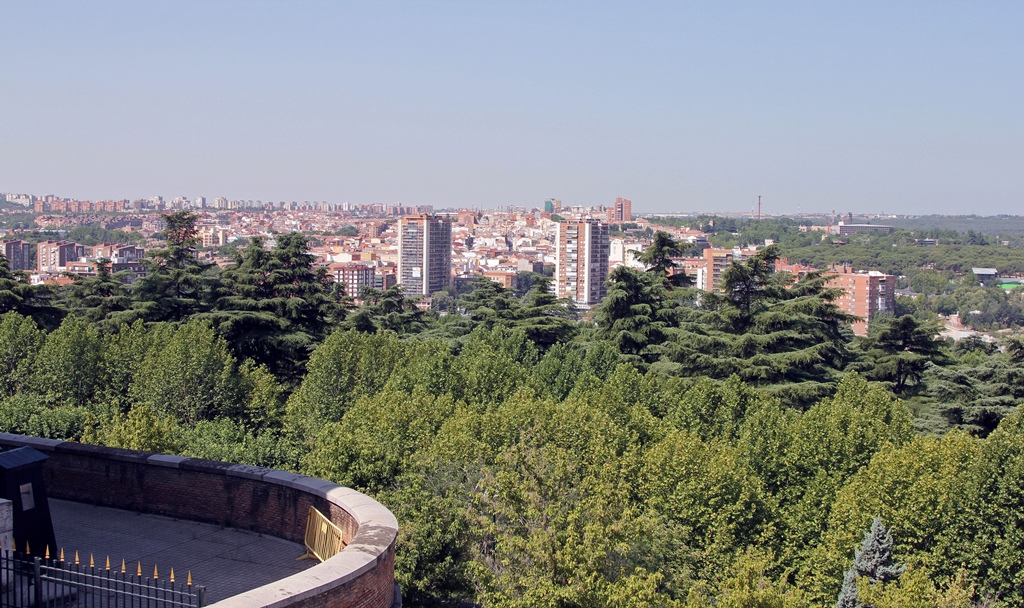
View Over Campo del Moro
Also included in the price of admission was a look at the royal pharmacy, which
was on the opposite side of the courtyard and mostly consisted of densely packed
shelves of containers with names of historical pharmaceutical ingredients on them.
Labelled Drawers and Jars
Back in the courtyard, we couldn't miss the view of a huge church to the south.
This was the Almudena Cathedral. This was our next destination.
Southern Façade and Almudena Cathedral

